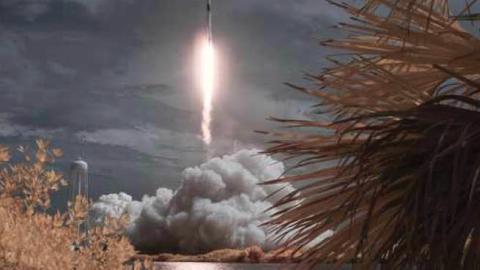Media elation at the recent U.S. space achievements needs to be tempered by recognizing that the history of space exploration is one of the setbacks.
SpaceX’s success in launching U.S. astronauts into space on its Crew Dragon rocket shows that NASA has established a winning public-private partnership. Rather than try to make and operate every space launch vehicle, the agency has prudently decided to build on its comparative advantage in deep space exploration and leave the manufacture and operation of low-earth orbiting craft to U.S. private companies.
The United States can leverage U.S. private sector entrepreneurship's unique strengths to promote more commercially viable means of low-earth transport. For this partnership to work, the private firms need to do their part in leading America back into space.
SpaceX and other companies have demonstrated great promise but inconsistent reliability. They need to make a better effort to emulate NASA’s lessons-learning process. Otherwise, we risk again seeing the roller-coaster cycle of overreach, a spectacular failure, and stagnation.
The disasters that befell the Challenger space shuttle in 1986 and the Columbia space shuttle in 2003 properly led NASA into a period of introspection and self-learning. The agency concluded that it had to demand substantially improved quality control by its contractors, especially after it decided to outsource to private companies the supply of commercial cargo to the International Space Station (ISS).
NASA’s lessons-learning process provides a model for U.S. private companies, who must make an unwavering commitment to safety.
Last’s month’s astronaut launch was supposed to have occurred years ago. Major mishaps and other developmental problems resulted in SpaceX falling way behind schedule. SpaceX’s Starship prototype, intended to launch hundreds of people into orbit and eventually beyond, has also suffered several failures. In its latest setback, the most recent prototype exploded on the Texas launch pad on May 29.
Some of these setbacks may stem from overly loose safety standards and quality control management. In 2017, the Department of Defense found that, of those contractors working on its evolved expendable launch vehicle (EELV) contractors, SpaceX had nearly half of the major nonconformities. Among other issues, the company had unprotected vent tubes and lacked a software development plan or a quality control plan for ground support equipment software at a Texas launch facility.
While SpaceX’s may currently face the most challenges, it is not the only private aerospace company that should warrant greater scrutiny. In its 2017 report, the Department’s other EELV contractors – Aerojet Rocketdyne and the United Launch Alliance – also had issues deserving of attention. The Department found that all these nonconformities could delay launch schedules and increase costs or risk of mission failure.
All these firms have received billions of dollars in federal contracts and other support. Even SpaceX’s recent space launch had to be backstopped by substantial help from NASA and other public and private actors. To make their human flights commercially viable, these companies also need to gain the confidence of friendly countries that are seeking an alternative means of sending their astronauts into space on non-Russian rockets.
The last few years have seen a remarkable partnership between NASA and private entrepreneurs and U.S. political leaders behind the goal of reestablishing U.S. space primacy. The Trump administration and congressional leaders understand the imperative of reinforcing U.S. space leadership, through public-private sector partnerships as well as NASA’s independent efforts.
Nonetheless, another major space mishap could unravel this invaluable domestic consensus. These firms owe their partners and shareholders superior quality control. The future of U.S. leadership in space depends on it.
Read in RealClear Defense



















